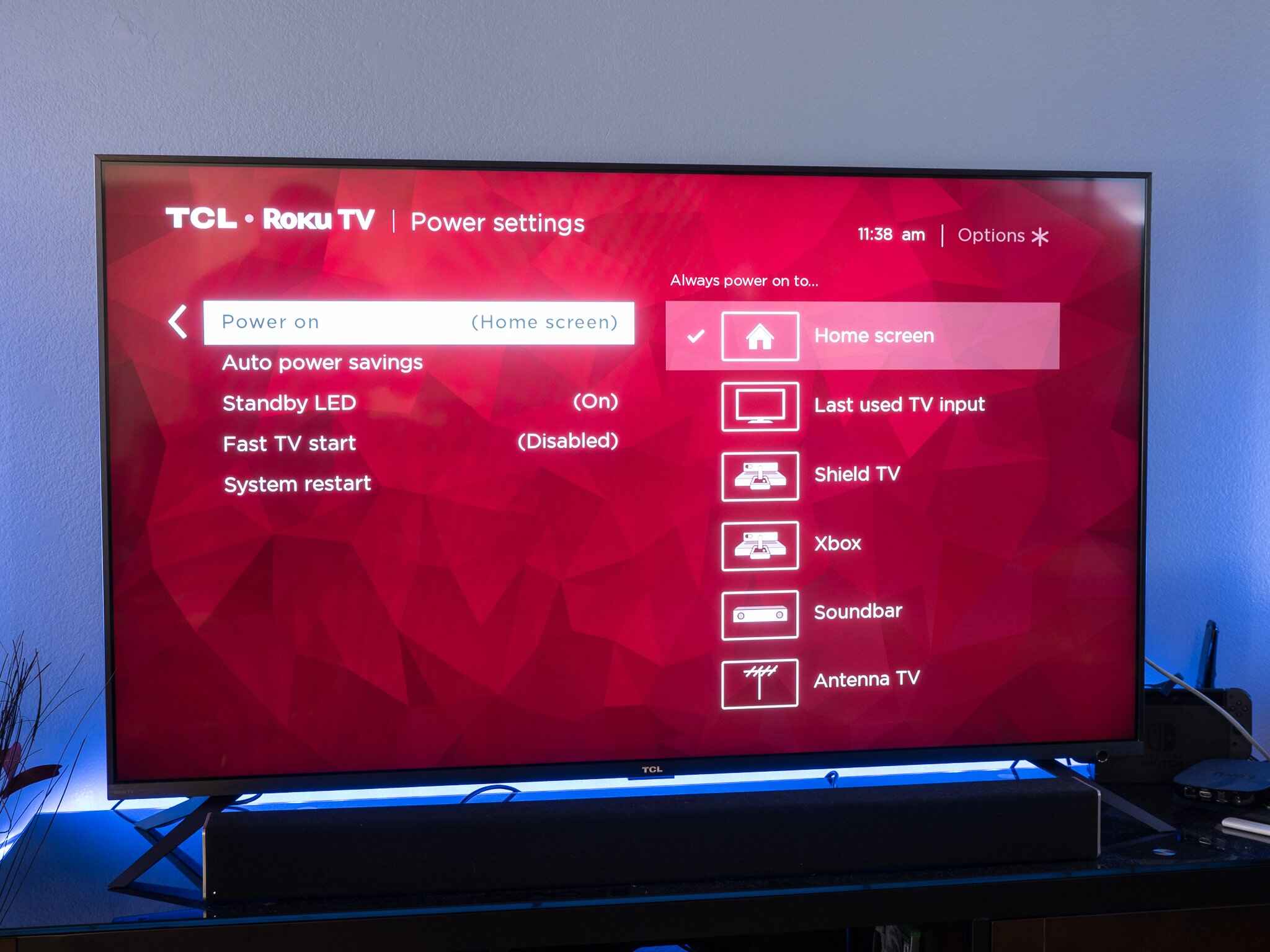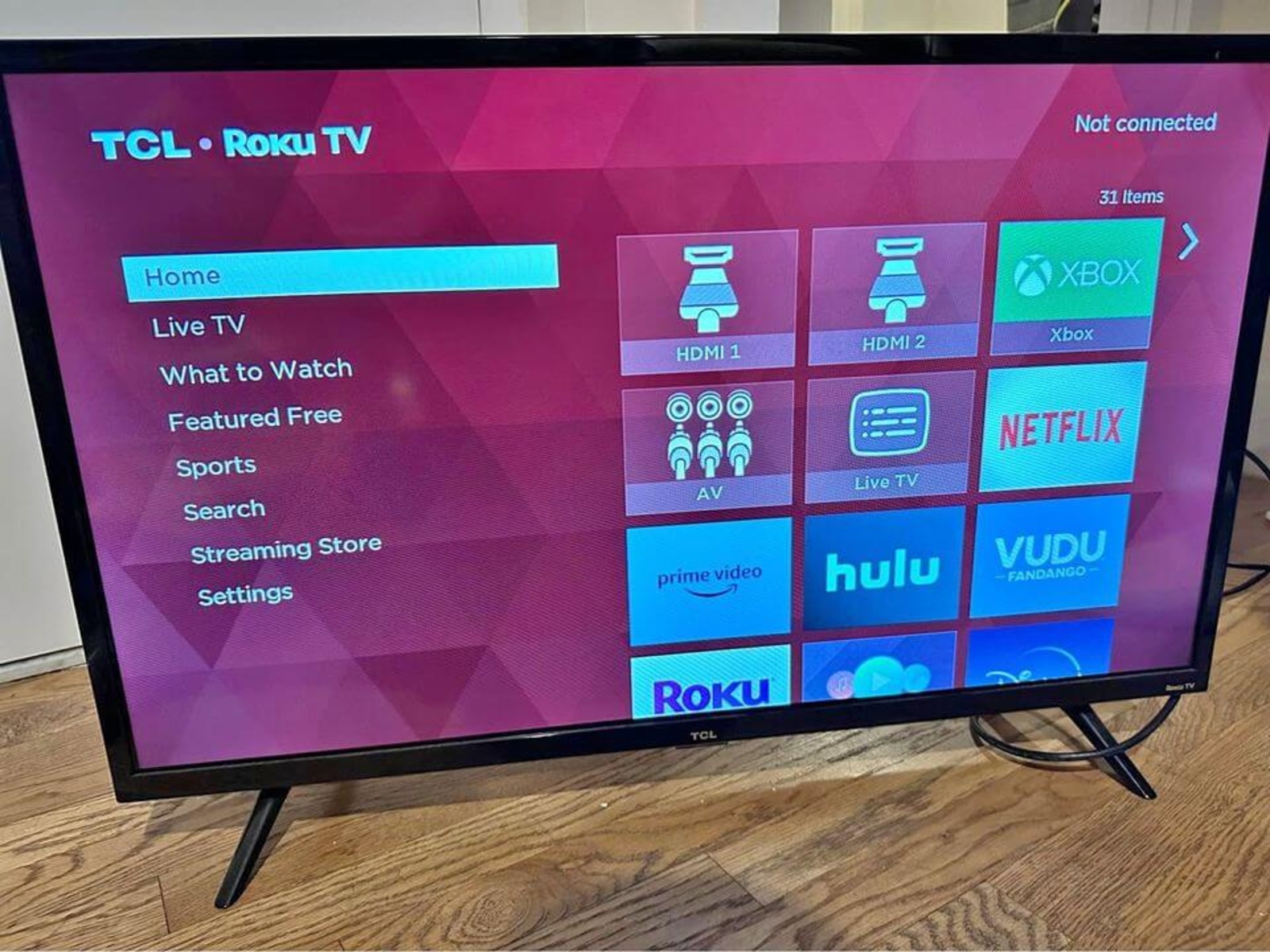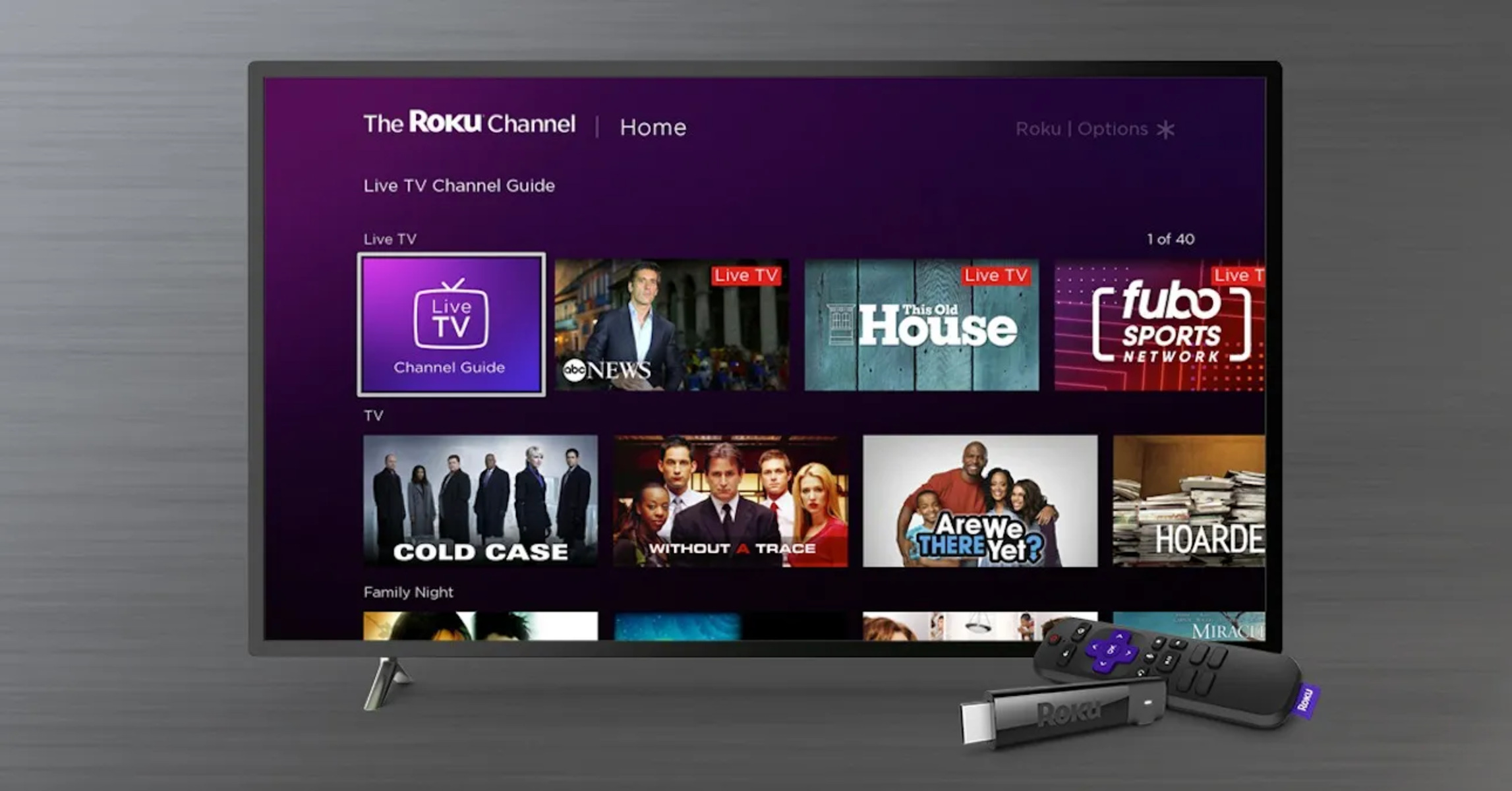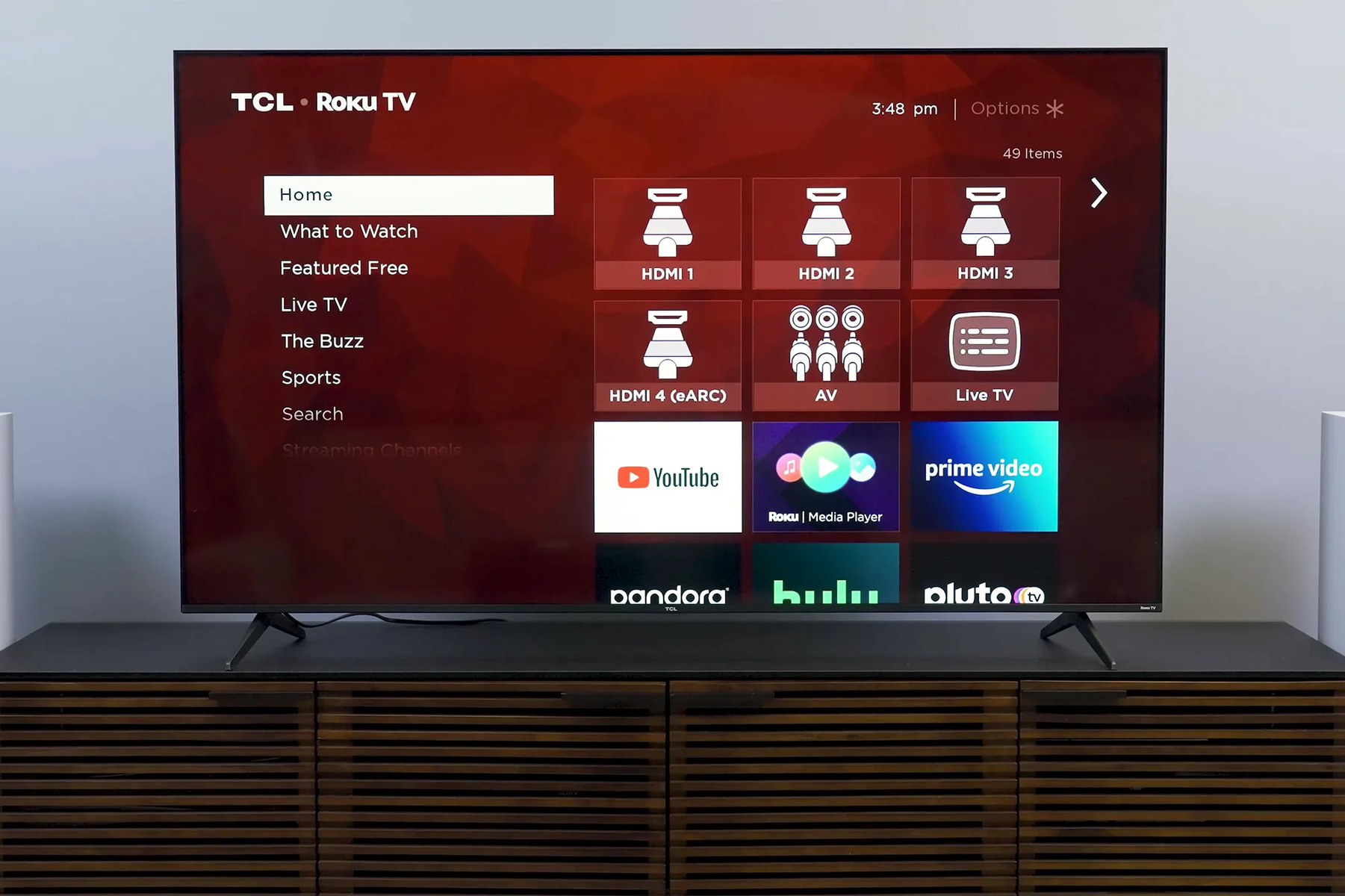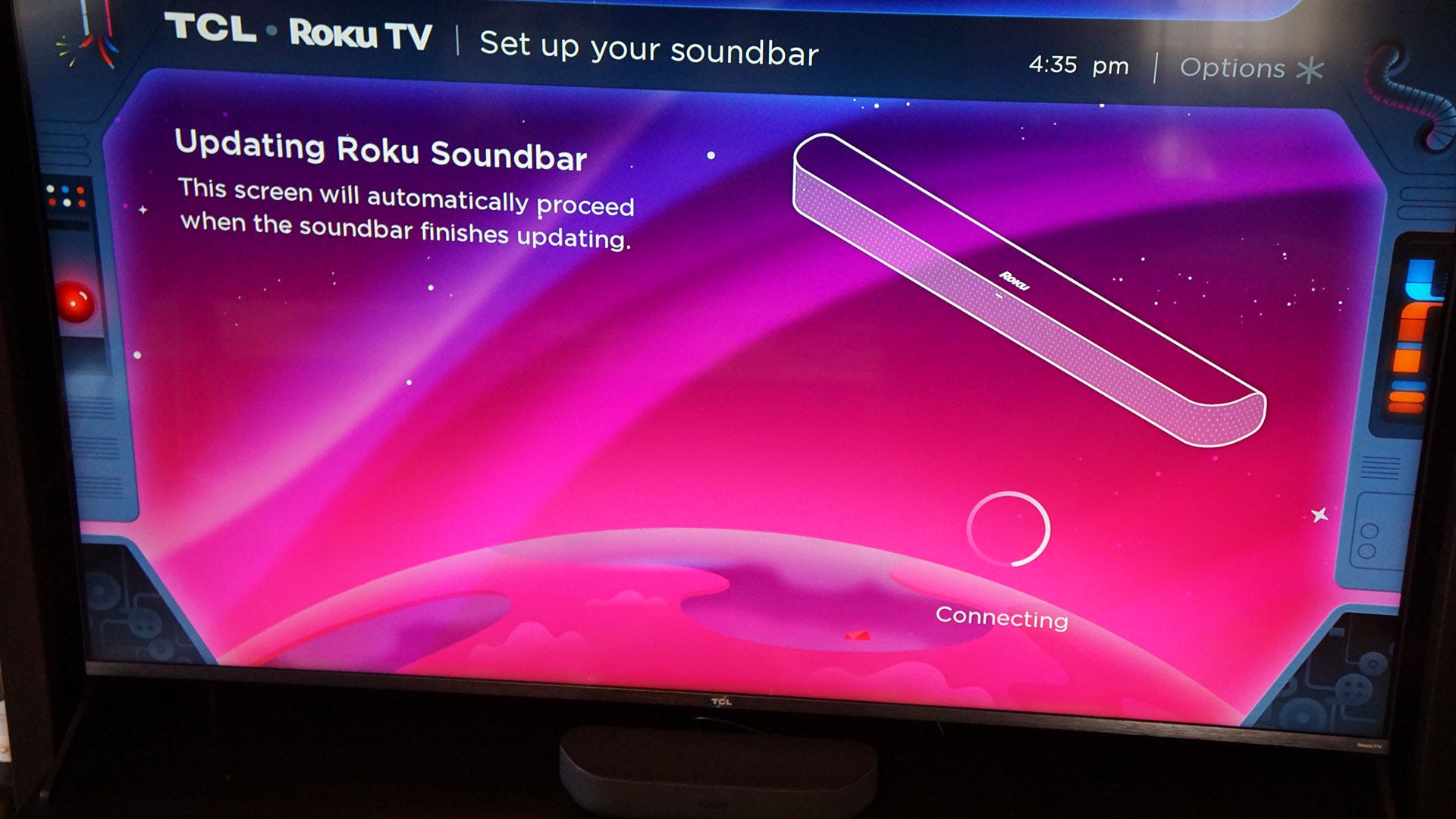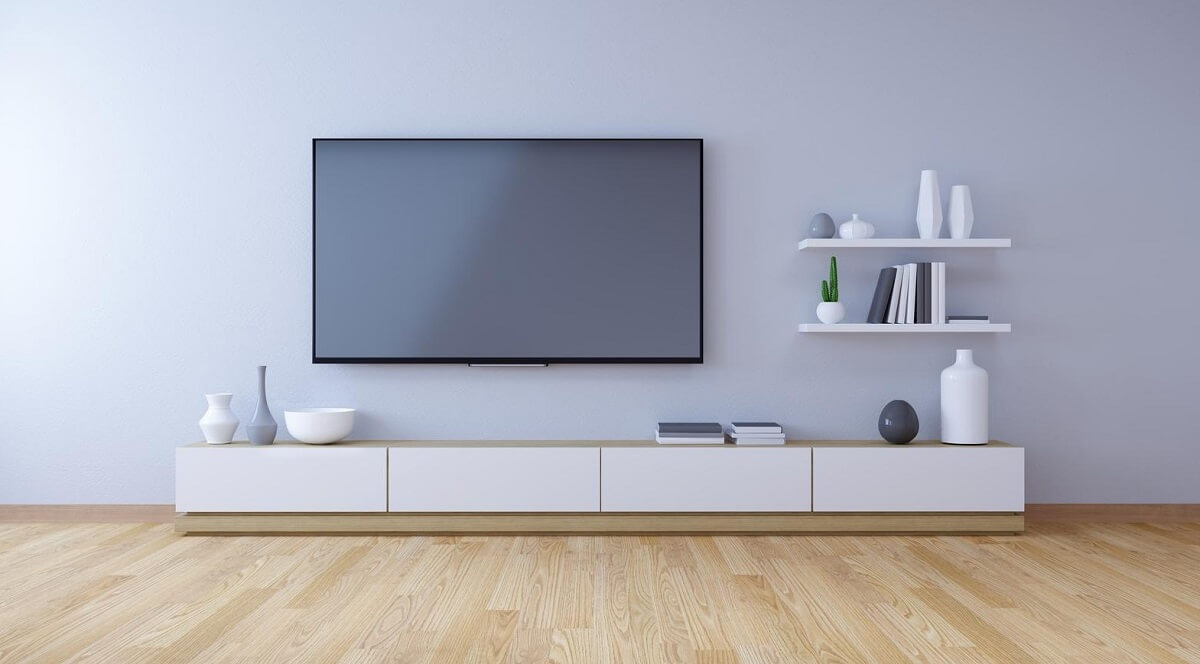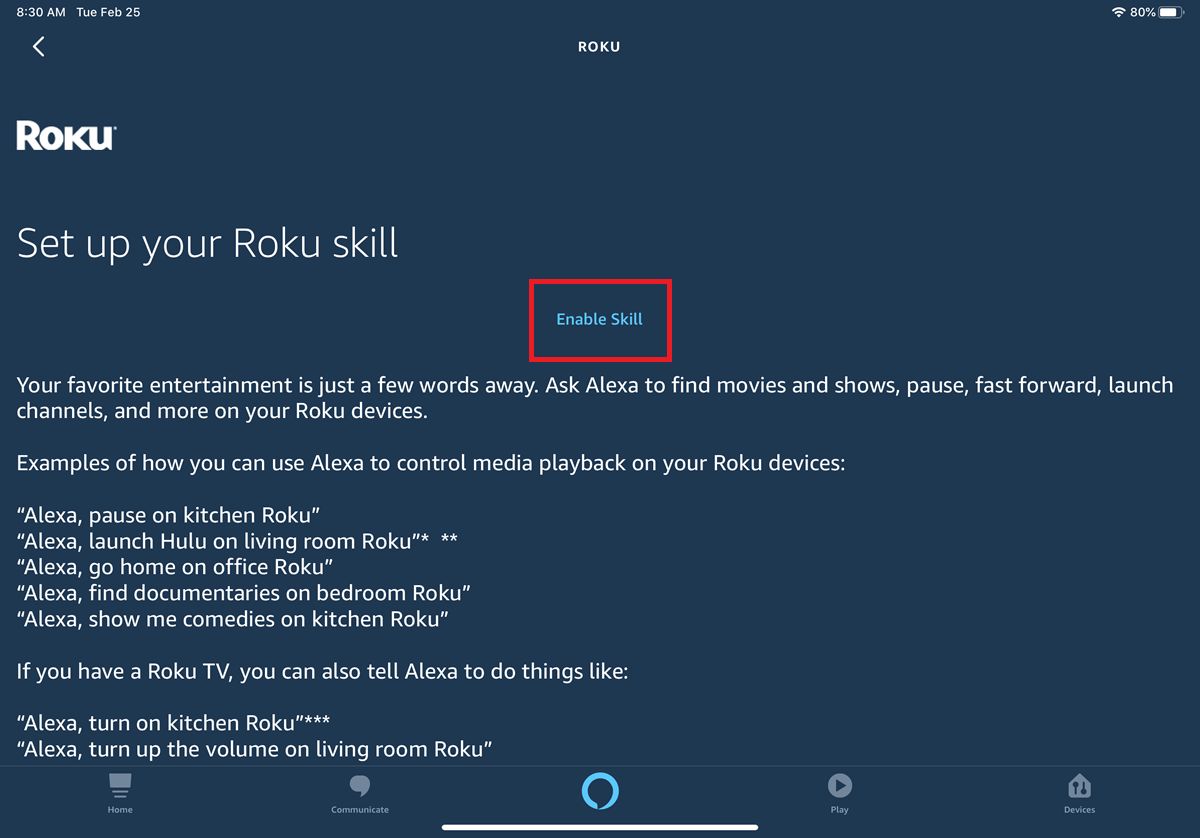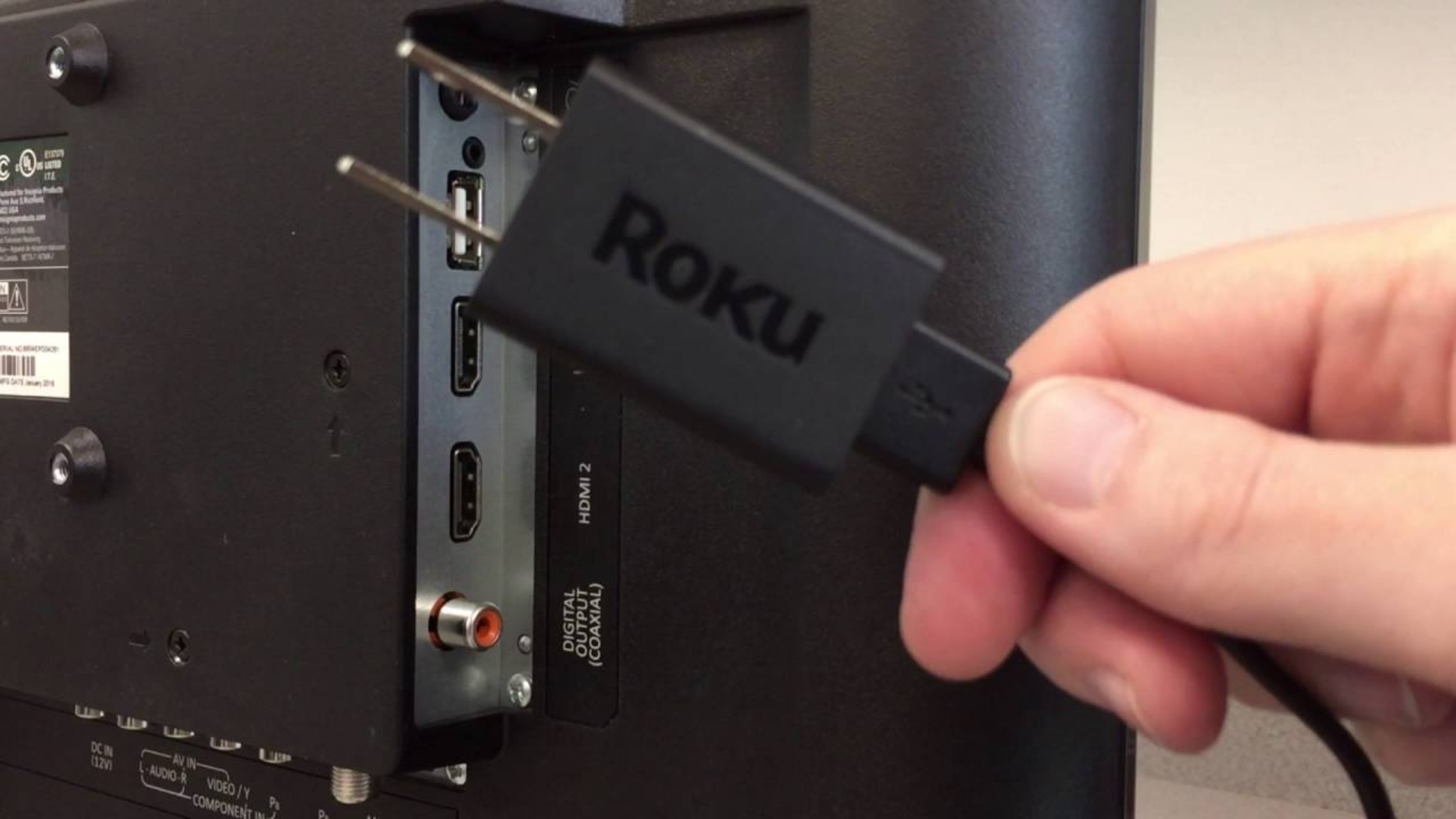Introduction
Roku TV has become increasingly popular among consumers as a cost-effective and user-friendly way to stream their favorite content. One of the key features of Roku TV is its ability to connect various devices, such as gaming consoles, cable boxes, and DVD players, to different input ports.
However, for those new to Roku TV, switching between these input ports can be a bit perplexing. In this article, we will provide a comprehensive guide on how to effortlessly switch input on your Roku TV.
Whether you want to play a video game, watch a movie from your DVD player, or stream content from your cable box, understanding how to switch inputs on your Roku TV is essential. By mastering this skill, you’ll have complete control over your entertainment and ensure that you never miss a moment of your favorite shows or movies.
So, if you’re ready to take full advantage of your Roku TV and explore the world of entertainment, let’s delve into the step-by-step process of switching inputs.
What is Roku TV?
Roku TV is a smart TV platform developed by Roku Inc., a renowned company specializing in digital media players. Unlike traditional televisions that rely solely on cable or satellite connections, Roku TV offers a unique streaming experience by integrating streaming services, cable programming, and other entertainment options in one device.
With Roku TV, you can access a wide range of streaming channels, including popular services like Netflix, Hulu, Amazon Prime Video, and many more. It essentially combines the functionality of a streaming device, such as a Roku streaming stick or set-top box, with the convenience of a television.
What sets Roku TV apart from other smart TVs is its user-friendly interface and the ability to seamlessly stream content from various sources. It eliminates the need for multiple devices and provides a simpler and more efficient way to enjoy your favorite shows, movies, and music.
Moreover, Roku TV offers a personalized home screen that allows you to customize your viewing experience. You can arrange your favorite channels, add new ones, and even personalize the theme to suit your preferences. It also provides recommendations based on your viewing history, ensuring you never run out of content to watch.
Roku TV is available in a variety of models and price ranges, catering to different needs and budgets. Whether you’re looking for a high-definition TV or a 4K Ultra HD TV, Roku offers a wide selection to choose from.
Overall, Roku TV combines the best of both worlds – the convenience of a smart TV and the extensive streaming options of a dedicated streaming device. It revolutionizes the way we consume media and provides a seamless and enjoyable entertainment experience for users of all ages.
Understanding Input Ports on Roku TV
Before we dive into the process of switching inputs on Roku TV, it’s essential to understand the concept of input ports. Input ports are the physical connections on the back or side of your Roku TV where you can plug in external devices for audio and video input.
Roku TVs typically have multiple input ports to accommodate different devices. The most common types of input ports you might come across on your Roku TV include HDMI, USB, component, composite, and VGA.
The HDMI (High-Definition Multimedia Interface) port is the most versatile and widely used input port. It allows you to connect devices like game consoles, Blu-ray players, and streaming devices like Roku streaming sticks or set-top boxes. HDMI ports support high-definition video and audio signals, providing the best quality output.
The USB (Universal Serial Bus) port on your Roku TV allows you to connect USB devices such as flash drives, external hard drives, or even cameras. With the USB connection, you can access media files directly from your devices and enjoy them on the big screen.
Component and composite ports are older technology, but they can still be found on some Roku TV models. These ports are used to connect devices with analog output, such as DVD players or older gaming consoles. Component ports provide a higher quality video signal than composite, but both allow you to enjoy content from these older devices.
VGA (Video Graphics Array) ports are commonly used for connecting older computers or laptops to your Roku TV. This type of connection allows you to mirror or extend your computer’s display onto the TV screen, making it perfect for presentations or for working on a larger display.
By understanding the different input ports on your Roku TV, you can easily connect and switch between various devices and enjoy your favorite multimedia on the big screen.
Step-by-Step Guide to Switch Input on Roku TV
Now that we have a basic understanding of input ports on Roku TVs, let’s explore the step-by-step process of switching inputs. There are multiple methods you can use, depending on your preference and the type of remote you have.
Method 1: Using the Roku Remote
- Start by turning on your Roku TV and ensure that the device you want to switch to is properly connected to one of the input ports.
- Take the Roku remote in your hand and locate the “Home” button. It is usually represented by a house icon.
- Press the “Home” button on your remote to access the Roku TV’s main menu.
- Using the arrow buttons on the remote, navigate and select the “Input” option from the menu.
- A list of all available input sources will appear on the screen. Use the arrow buttons to highlight the desired input source and press the “OK” button to switch to it.
Method 2: Using the Home Button
- Ensure that your Roku TV is turned on and the device you want to switch to is connected to one of the input ports.
- Locate the “Home” button on your Roku TV remote.
- Press the “Home” button to bring up the main menu on your Roku TV.
- Using the arrow buttons on your remote, navigate to the right and select the “Input” option.
- A list of available input sources will be displayed. Use the arrow buttons to highlight the desired input source and press the “OK” button to switch to it.
Method 3: Using the Roku Mobile App
- Download and install the Roku mobile app on your smartphone or tablet from the App Store or Google Play Store.
- Ensure that your Roku TV and smartphone or tablet are connected to the same Wi-Fi network.
- Open the Roku mobile app, and it will automatically detect your Roku TV.
- Tap on the remote icon at the bottom center of the app to open the virtual remote control.
- Tap on the “Home” button on the virtual remote to access the Roku TV’s main menu.
- Swipe left on the app screen to reveal additional options and select the “Input” option.
- Choose the desired input source from the list, and your Roku TV will switch to that input.
By following these step-by-step methods, you can easily switch inputs on your Roku TV and seamlessly enjoy your favorite content from different devices without any hassle.
Method 1: Using the Roku Remote
One of the easiest ways to switch inputs on your Roku TV is by using the Roku remote. This method is ideal if you prefer a physical remote control or if you have a Roku TV that comes with a dedicated remote.
- Start by turning on your Roku TV and ensure that the device you want to switch to is properly connected to one of the input ports.
- Take the Roku remote in your hand and locate the “Home” button. It is usually represented by a house icon.
- Press the “Home” button on your remote to access the Roku TV’s main menu.
- Using the arrow buttons on the remote, navigate and select the “Input” option from the menu.
- A list of all available input sources will appear on the screen. Use the arrow buttons to highlight the desired input source and press the “OK” button to switch to it.
The “Home” button serves as a gateway to the main menu, where you can access various settings and features of your Roku TV. By navigating to the “Input” option, you can choose from the available input sources and seamlessly switch between different devices.
Keep in mind that the exact steps may vary slightly depending on the model of your Roku TV and its interface. However, the general process remains the same across most Roku TV remotes.
Using the Roku remote to switch inputs on your Roku TV is straightforward and convenient. It provides a quick and hassle-free way to connect and enjoy content from different devices on your television.
Method 2: Using the Home Button
If you prefer a simpler method to switch inputs on your Roku TV, you can use the Home button on your remote control. This method is especially useful if you don’t have a dedicated Roku remote and are using a universal remote or the physical buttons on your Roku TV.
- Ensure that your Roku TV is turned on and the device you want to switch to is connected to one of the input ports.
- Locate the “Home” button on your Roku TV remote.
- Press the “Home” button to bring up the main menu on your Roku TV.
- Using the arrow buttons on your remote, navigate to the right and select the “Input” option.
- A list of available input sources will be displayed. Use the arrow buttons to highlight the desired input source and press the “OK” button to switch to it.
The “Home” button acts as a central control point on your Roku TV remote, bringing up the main menu from which you can access various settings and features. By selecting the “Input” option and navigating through the list of available input sources, you can easily switch between devices connected to your Roku TV.
Note that the button placement and navigation steps may differ depending on the model or brand of your Roku TV remote. However, the general process remains consistent across most devices.
Using the Home button is a convenient way to switch inputs on your Roku TV without the need for any additional steps or complicated menu navigation. It allows for quick and effortless access to your preferred input source, ensuring a seamless and enjoyable viewing experience.
Method 3: Using the Roku Mobile App
If you prefer using your smartphone or tablet as a remote control, you can utilize the Roku Mobile App to switch inputs on your Roku TV. This method offers increased flexibility and convenience, allowing you to switch inputs from the comfort of your mobile device.
- Download and install the Roku mobile app on your smartphone or tablet from the App Store or Google Play Store.
- Ensure that your Roku TV and smartphone or tablet are connected to the same Wi-Fi network.
- Open the Roku mobile app, and it will automatically detect your Roku TV.
- Tap on the remote icon at the bottom center of the app to open the virtual remote control.
- Tap on the “Home” button on the virtual remote to access the Roku TV’s main menu.
- Swipe left on the app screen to reveal additional options and select the “Input” option.
- Choose the desired input source from the list, and your Roku TV will switch to that input.
Utilizing the Roku Mobile App gives you the convenience of controlling your Roku TV from your mobile device. The app’s virtual remote function gives you access to all the essential buttons, including the “Home” button, eliminating the need for a physical remote control.
By selecting the “Input” option within the Roku Mobile App, you can easily switch between the available input sources connected to your Roku TV. The virtual remote provides a user-friendly interface that replicates the physical remote’s functionalities, making it simple and intuitive to navigate.
This method is particularly useful if you often misplace your physical remote or want to take advantage of the additional features offered by the Roku Mobile App. It allows you to enjoy the convenience of switching inputs on your Roku TV with just a few taps on your smartphone or tablet.
Whether you’re across the room or lounging on your couch, the Roku Mobile App provides a seamless and efficient way to control your Roku TV and switch inputs without any hassle.
Tips and Troubleshooting
While switching inputs on a Roku TV is generally a straightforward process, there are a few tips and troubleshooting techniques that can come in handy to ensure a smooth experience. Here are some useful tips to consider:
1. Label your input ports:
To easily identify which device is connected to each input port, consider labeling them. You can use labels or even color-coded stickers to match the devices with the corresponding input ports. This makes it quick and convenient to switch between devices without confusion.
2. Use HDMI-CEC feature:
Roku TVs usually support HDMI Consumer Electronics Control (HDMI-CEC), which allows you to control multiple devices connected via HDMI with a single remote control. Ensure that HDMI-CEC is enabled on your Roku TV and the connected devices to easily switch inputs and control them using the Roku remote.
3. Check cable connections:
If you’re experiencing issues with switching inputs or if some devices are not being recognized, double-check the cable connections. Make sure all cables are securely plugged into the correct input ports and ensure they are not damaged or loose.
4. Restart your Roku TV:
If you’re encountering any issues with switching inputs or if the Roku TV is not responding, a simple restart may resolve the problem. Go to the Roku TV settings, locate the “System” option, and select “Power.” Choose the “Restart” option to refresh the Roku TV.
5. Update firmware:
Regularly check for firmware updates for your Roku TV. These updates often include bug fixes, improved functionality, and compatibility with new devices. Keep your Roku TV up to date to ensure smooth performance and to avoid any input switching issues.
6. Consult user manual or online resources:
If you’re facing specific issues with your Roku TV or need assistance with input switching, consult the user manual that came with your Roku TV. Additionally, the Roku support website and online forums provide extensive troubleshooting resources and step-by-step guides for common problems.
By following these tips and troubleshooting techniques, you can overcome any potential obstacles and enjoy a seamless switching experience on your Roku TV.
Conclusion
Switching inputs on your Roku TV is a simple process that allows you to effortlessly switch between different devices and enjoy a wide range of entertainment options. Whether you’re using the Roku remote, the Home button, or the Roku Mobile App, you have multiple convenient methods at your disposal.
Understanding the input ports on your Roku TV and familiarizing yourself with the various methods to switch inputs will help you make the most out of your entertainment experience. Whether you want to play video games, stream content, or watch movies, Roku TV provides a user-friendly interface that ensures easy access to your preferred input source.
By following the step-by-step guides provided in this article, you can confidently switch between devices connected to your Roku TV without any confusion or hassle. Whether you prefer the physical remote control, the simplicity of the Home button, or the versatility of the Roku Mobile App, you can tailor the input switching process to suit your needs and preferences.
Additionally, keeping in mind the tips and troubleshooting techniques can help you overcome any potential issues or complications that may arise during the input switching process. From labeling input ports to leveraging HDMI-CEC and ensuring cable connections are secure, these tips can enhance your overall experience and minimize any interruptions.
With Roku TV, you have the power to seamlessly switch between various input sources and enjoy the vast array of entertainment options available at your fingertips. Whether you’re streaming movies, playing games, or watching live TV, Roku TV offers a user-friendly and versatile platform that revolutionizes the way you consume media.
So, explore your Roku TV, connect your favorite devices, and start switching inputs with ease. Take control of your entertainment and immerse yourself in a world of endless possibilities.







